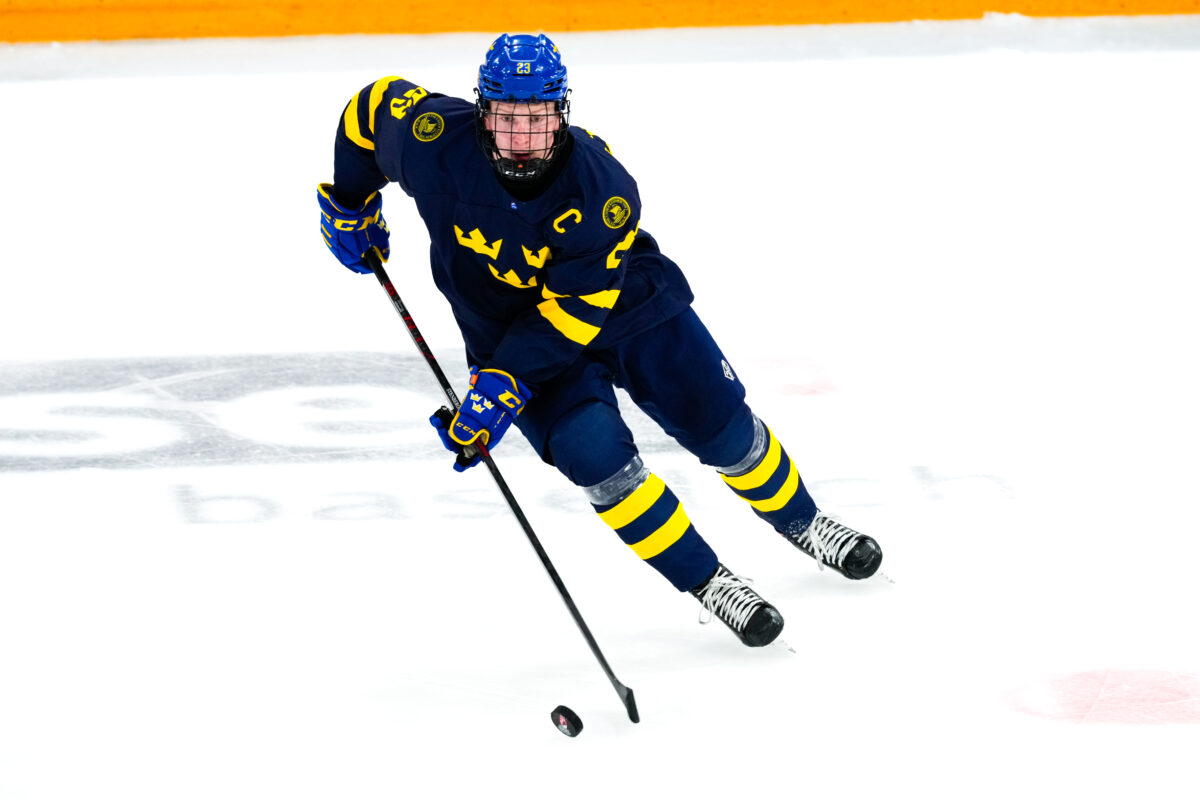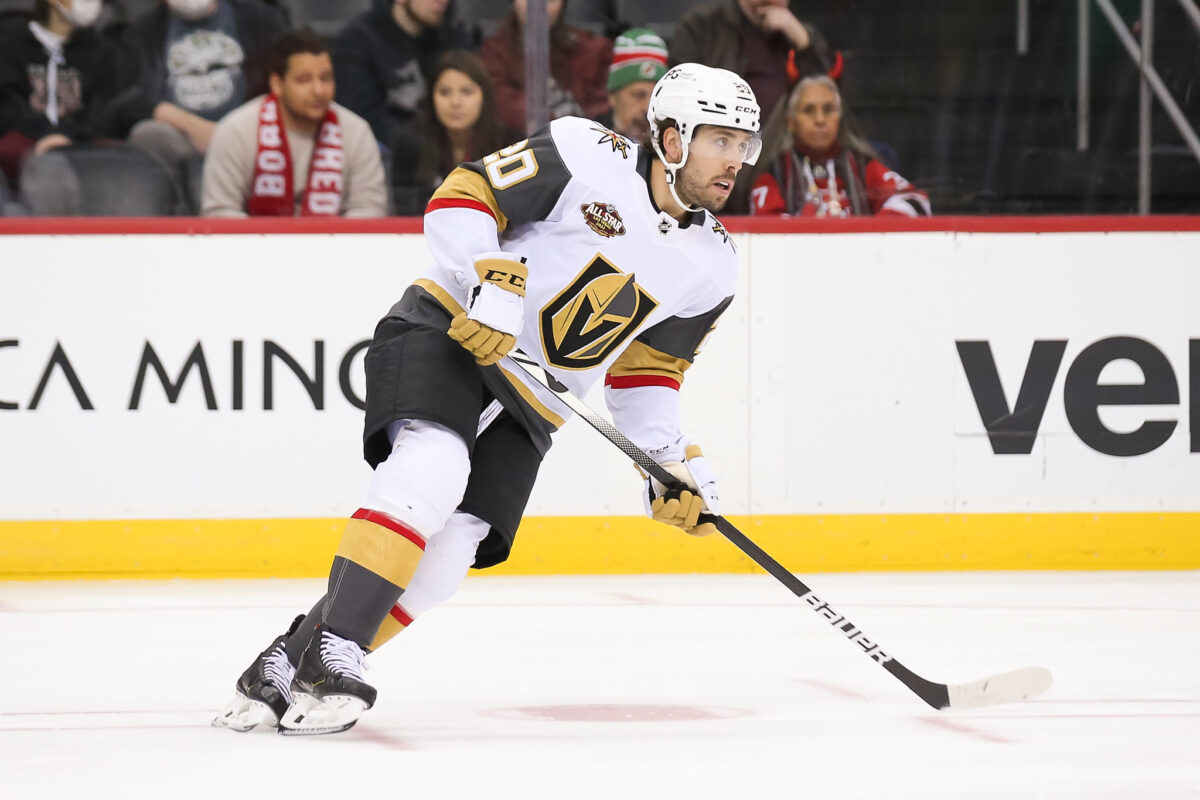The words inconsistent and confusing come to mind when watching the St. Louis Blues play, and that sentiment appears to be felt league-wide. The team shows up and competes hard on some nights and lacks energy the next. Elliotte Friedman and Jeff Marek on the 32 Thoughts Podcast were discussing the Blues on their episode that was released this past Monday, and they believe “when you have a team as inconsistent as the Blues, it’s because you have guys playing one or two spots too high in the lineup.” It’s hard not to agree with that statement when looking at this Blues roster and how the team has played this season at both ends of the ice.
The top line, for the most part, has been excellent. Taking away the one game where Robert Thomas and Jordan Kyrou were benched against the Detroit Red Wings, the trio has been carrying the load for the team offensively. Kyrou, Thomas, and Pavel Buchnevich have been among the top lines in the NHL with Thomas on pace for the most points of any Blues player since 2002, and Kyrou and Buchnevich hovering around the 70-point pace mark. However, there have been very few bright spots among the forward core outside those three players.
Jake Neighbours has come into his own this season with his constant effort and physicality being a burst of energy the team lacks on most nights, and he is a vital portion of a power play that has found some footing since interim head coach Drew Bannister took over after the firing of Craig Berube on Dec. 12. Like Neighbours, Alexey Toropchenko has been among the few Blues to show consistent effort and heart night in and night out with his high-level skating ability and rugged physical prowess on the boards and the forecheck. However, those are five names of a forward core that is made up of 12 players.
Steady play from veteran forwards like Brayden Schenn and Kevin Hayes has been hard to come by, and the days of either one of them being a predominant player in the top six are over. Age has caught up to both players, and the lack of high-level skill and skating ability have made them liabilities for the Blues on countless occasions this season. The primary issue with this team has been the need for a playmaker behind Thomas at the center position. At this stage in their careers, both No. 10 and No. 12 are bottom-six players at best, and this season, they’ve been asked to play higher up in the lineup in more point-producing roles.
With multiple players playing roles that they shouldn’t be, general manager Doug Armstrong has a tough job filling the holes on the roster to try and catapult the team into contention. Finding a second-line center should be one of his top priorities in the off-season, and several names could be fits for the Blues in the summer.
The Prospects
The most likely options to take the spot centering the second line for the Blues are in-house prospects. The team is full of promising young talent, and several of them are centers. Dalibor Dvorsky and Otto Stenberg are the two most likely prospects to step into the role on the second line. Both first-round picks from the 2023 NHL Entry Draft have been highly touted and have high ceilings with great potential.
Dvorsky, the first of three first-round picks last year, has dominated for the Sudbury Wolves in the Ontario Hockey League (OHL) with 67 points, including 34 goals in 43 games. He has showcased elite shooting and playmaking ability during his time in Sudbury and projects to be a top-six forward if he develops his 200-foot game.
The second of those three first-round picks is a more raw prospect than his counterpart in Sudbury. Stenberg has shown flashes of versatility and the ability to play in all situations. He shined at the World Juniors, leading Sweden to the gold medal game, and although he has proven to be a jack of all trades but master of none, his fit with St. Louis is obvious. The Blues need players who can play in all situations, including special teams, and the 18-year-old projects to be a player that can evolve into that. However, it will be at least another season or two before the Blues see him at the NHL level, so although the ceiling and promise are exciting to think about, he is not necessarily an option for the Blues in the 2024-25 season.

There is one more wild card in the prospect pool that could play a significant role in the Blues’ immediate future as early as next season: Zach Dean. Acquired in the deal that saw Ivan Barbashev shipped to the Vegas Golden Knights, Dean is an intriguing prospect that Blues fans are eager to see at the next level. Similar to prospect Zachary Bolduc, the Blues are taking their time developing an all-around game for Dean, and it has taken him awhile to find his footing in the American Hockey League (AHL) with the Springfield Thunderbirds. Recently, though, his offensive game has turned around with eight points in his last ten games, and fans are enamored with the potential of Dean fitting into the lineup in the future. The idea of him being a second-liner is far-fetched, but he can be a solid third-line contributor.
External Options
Armstrong has shown in the past to be an aggressive general manager, taking big swings at star players to try and bolster the roster. Some of those moves, like trading for Ryan O’Reilly, worked wonders for the franchise, while others have struggled to make an impact. Unfortunately for Armstrong, the pool of unrestricted free agents at the center position is underwhelming this coming offseason, and most free agents that fit the Blues’ retool timeline are restricted free agents (RFAs). However, there are still good options in both markets that the team should take a look at to fill the void up the middle.
Related: Doug Armstrong’s Moves That Haven’t Succeeded for the Blues
Every year, there are always a handful of young players that hit the restricted free-agent market. As an opposing team, signing these players can be complicated because the player’s original team can match any offer that the player signs. Additionally, if a team agrees to an offer sheet with a player who is an RFA, and the original team does not want to match the offer, they are compensated with draft choices from the player’s new team based on salary. Frequently, teams will engage in trade talks surrounding a player’s RFA rights, allowing them to negotiate a deal with the player they were coveting without the risk of another team matching the contract. These deals typically take place during the off-season, and there are a few options the Blues could look into to fill the role of their second-line center.
Trading For Shane Pinto
Shane Pinto’s road throughout his NHL career has been rocky. In his first full season in the NHL last season, he totaled 35 points, including 20 goals, and showcased a high offensive ceiling. Then, after a strong season, he was suspended for 41 games for violating the league’s gambling policy. Since returning to the Senators lineup, he has produced at nearly a point-per-game pace, with 18 points in 20 games, and has built off of a strong season last year.
With Ottawa at a crossroads and needing to shake things up within the core of their franchise to get back to winning ways, the team might want to avoid bringing Pinto back, especially given his suspension. There is no guarantee that the Senators want to get rid of Pinto, as he is only 23 years old and could be a vital part of their future. He has played well during his limited time in the NHL, performing at a half-point-per-game pace over the last two seasons.
However, the Senators could get a decent haul from a team willing to pay Pinto top value and give Ottawa several assets to help them bolster their roster and get out of their rebuild. His price will be significantly higher than the current NHL minimum ($775,000). If Ottawa wants to move on from him, trading away his rights to a team that needs center depth like the Blues could work out for both parties involved.
Signing Chandler Stephenson
With all the moves the Vegas Golden Knights have made at the deadline, their cap situation will be fascinating to monitor throughout the off-season. With several pending free agents like Alec Martinez and Jonathan Marchessault, they were already in a tight situation with the salary cap heading into the summer. Adding potential extensions for newly acquired players like Noah Hanifin and Anthony Mantha could make things more difficult for the Golden Knights to bring back everyone in their core. Especially when you add in the Tomas Hertl contract that the team will now have on the books for an additional six seasons after this one, they could have to make some difficult choices by letting some key free agents walk.

The odd man out on this roster appears to be Chandler Stephenson, a free agent at season’s end. He should be a target for St. Louis if he hits the open market in the summer. With the emergence of William Karlsson, who is playing like an elite-level center at both ends of the ice, Stephenson has found himself seeing a lot of time on the wing this season. It is expected to stay that way for the remainder of the season, especially with the addition of Hertl. However, he has been a primary center for most of his career, including numerous roles in the top six.
Coming off two seasons of 60-plus points, Stephenson’s production has dropped in 2023-24 with just 38 points in 59 games. However, even after a down season since being in Vegas, he has been a steady man inside the Golden Knights’ top six and can provide stability at both ends of the ice if he returns to his form from 2021-2023. At age 30, he is on the older side of where the Blues are potentially looking to add. However, if Armstrong can bring the Stanley Cup champion in on a contract that makes sense with only a few years on it, he would be an immediate upgrade over Schenn. He would allow the Blues to continue developing players like Dvorsky and Stenberg if they are not ready to jump into the NHL.
Armstrong Must Do Something
Whether it is going with the promising young prospects and entering a youth movement or bringing in an NHL-level player with a top-six skill set, Armstrong and the Blues need to do something to bolster the center position for next season. Although a great leader and captain, Schenn is no longer a top producer for this team; his role should reflect that by moving to a third-line spot. Utilizing him as a mentor for these young players coming up the pipeline will be beneficial, but continuing to count on him as someone who can give nearly 15-18 minutes a night of consistent hockey is just not something the team can do.
If Armstrong wants to avoid this retool becoming a rebuild, figuring out the top two center spots for next season will need to be a top priority in an off-season that appears to be a career-defining moment for the Blues management staff.
